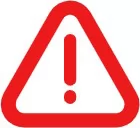General operating and Maintenance instructions
These general instructions complete the specific instructions for each device, and the operating instructions or documents delivered with the product. Malfunctions, damage or injury may occur if these instructions are not followed.
General
PFC components are designed to be operated in accordance with the limits specified on the nameplate, in the operating and maintenance instructions, or in the documents delivered with the product. All applicable directives, legislation, orders and standards, as amended from time to time, as well as state-of –the art practices and procedures must be observed for the intended scope of application of the product. Where applicable, take all appropriate measures to ensure the requirements are met.
All assembly, operation, use, and maintenance must be performed by qualified, authorized personnel.
Personnel working with the components must be familiar with the applicable safety regulations and requirements relating to the components, apparatus, machinery and electrical installations (for valves, solenoid valves, electronic control equipment, air service equipment).
Assembly
- Preparation
● Check the preliminary storage conditions for the component. They must be in accordance with the product’s specifications
● Carefully remove the components from their packaging.
● Power off and depressurize the apparatus, machinery, or installation designed to receive the component. Stipulate power off and depressurization requirements to guard against any unauthorized intervention.
● Make sure that the unit, its components, and their environment are clean, and protect them against deterioration.
● Do not modify the device.
● Make sure that the fluid is compatible with the materials it contacts.
Air, water, or oil is used in general (in cases where oils is used as a fluid, make sure that it does not vaporise within the component’s operating temperature range)
The operator or user must make sure that the gas or liquid group corresponds to the product’s classification.
- Connection
● Connect all the ports of the component that may come in contact with the fluid.
● Clean the conduits that will connect to the component.
● Be sure to observe the direction of flow of the fluid
● Use only the provided connection possibilities
● Ensure that no foreign matter enters the circuit, in particular when making the connection leak proof
● Be sure to observe the allowed bend radius for tubing; do not restrict the ports for fluid circulation.
● Tubes and connection elements must not exert any force, torque, or strain on the product.
● Use appropriate tools and locate assembly tools as close as possible to the connection point.
● Be sure to observe the recommended torque when tightening tubing connections.
● Connections must be made to last.
 Improper installation may cause undesirable hydraulic effects that can reduce the life of the device (erosion, cavitation, water hammer etc.)
Improper installation may cause undesirable hydraulic effects that can reduce the life of the device (erosion, cavitation, water hammer etc.)
- Operation
Operation is authorized only after having duly verified that the apparatus, machinery or installation in which the component has been incorporated complies with the applicable directives, legislation, orders and standards, as amended from time to time.
- Use
● Do not subject the components to loads or forces other than those for which they are designed.
● Do not operate the component under pressure unless its ports are connected to conduits
● This component is not designed to operate submerged in a liquid. Make sure that water cannot enter the control system.
● Make sure to prevent the device from freezing in the event that temperatures fall below 5℃
- Maintenance
We recommend you to periodically check the correct operation of the components and clean them. The checking and cleaning frequency depends on the type of fluids used, and the operating and environmental conditions.
Before any maintenance work is done, power off and depressurize the component, apparatus, machinery or installation to prevent any unauthorized intervention.
Make sure that the component and its environment are clean.
- Environment
Components must be disposed of in compliance with applicable environmental regulations when taking apparatus or machinery out of service and carrying out their final destruction, or dismantling the installation.

